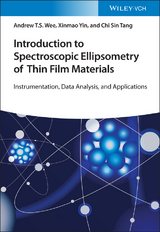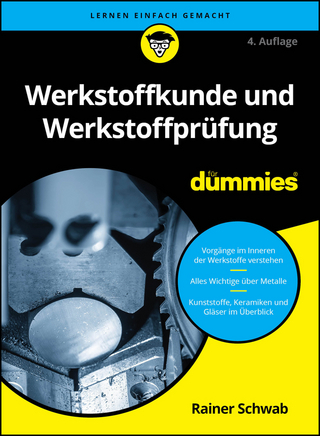Introduction to Spectroscopic Ellipsometry of Thin Film Materials
Wiley-VCH (Verlag)
978-3-527-34951-7 (ISBN)
Andrew T. S. Wee is a class of 62 Professor of Physics, and Director of the Surface Science Laboratory at the National University of Singapore (NUS). His research interests are in surface and nanoscale science, scanning tunnelling microscopy (STM) and synchrotron radiation studies of the molecule-substrate interface, graphene and related 2D materials. He was a Commonwealth Fellow as well as a Rhodes Scholar at the University of Oxford, where he received his DPhil (1990). He holds a Bachelor of Arts (Honours) in Physics (1994) as well as a master degree from the University of Cambridge. He is an Associate Editor of the journal ACS Nano and serves or has served on several other journal editorial boards.Dr. Yin Xinmao, Research Fellow in Physics department in National University of Singapore and Singapore Synchrotron Light Source (2014-present). He completed his degrees of the bachelor and PhD in Zhejiang University in 2010 and National University in 2015, respectively. His expertise is in the field of condensed matter physics and optical spectroscopy, with primary strength in studying the electronic and spin structures of materials using optical spectroscopic techniques at different energy range. He specializes in studying materials such as 2D transition metal dichalcogenides, High-Tc superconducting cuprates, and colossal magnetoresistance manganites and their interfaces. He is expert in the various optical analysis techniques (ellipsometry, reflectivity, absorption, etc.) and the synchrotron-based spectroscopy (XAS, XMCD, XRD, XPS, ARPES etc.). Using these spectroscopic techniques, the underlying physical mechanism of macroscopic and microscopic properties governing superconductivity, ferromagnetism, phase transition, as well as spin changes, plasma and exciton excitations have been studied.Chi Sin Tang is a final-year PhD student at the NUS Graduate School of Integrative Sciences and Engineering, National University of Singapore. He holds a Bachelor of Science (Honours) in Physics (2012) as well as a post-graduate diploma in Education from Nanyang Technological University. An expert user of optical techniques such as Spectroscopic Ellipsometry and synchrotron-based spectroscopic measurements that include X-ray Absorption Spectroscopy and Photoemission Spectroscopy, his research interests mainly focus on the electronic and optical properties of low-dimensional materials such as two-dimensional transition metal dichalcogenides, unconventional oxide thin-films and the effects of interfacial interactions.
1. Spectroscopic Ellipsometry: Basic Principles
2. Strongly Correlated Systems: Cuprates & Manganites
3. Two-dimensional Transition Metal Dichalcogenides
4. Single layer graphene systems
5. Nickelate Systems
6. Future Development and Applications of Spectroscopic Ellipsometry
| Erscheinungsdatum | 13.04.2022 |
|---|---|
| Verlagsort | Weinheim |
| Sprache | englisch |
| Maße | 170 x 244 mm |
| Gewicht | 408 g |
| Themenwelt | Naturwissenschaften ► Chemie |
| Technik ► Maschinenbau | |
| Schlagworte | Chemie • Chemistry • Dünne Schicht • Ellipsometrie • Festkörperchemie • materials characterization • Materials Science • Materialwissenschaften • Physics • Physik • Polymer Physics • Polymerphysik • solid state chemistry • spectroscopy • Spektroskopie • Werkstoffprüfung |
| ISBN-10 | 3-527-34951-0 / 3527349510 |
| ISBN-13 | 978-3-527-34951-7 / 9783527349517 |
| Zustand | Neuware |
| Informationen gemäß Produktsicherheitsverordnung (GPSR) | |
| Haben Sie eine Frage zum Produkt? |
aus dem Bereich




